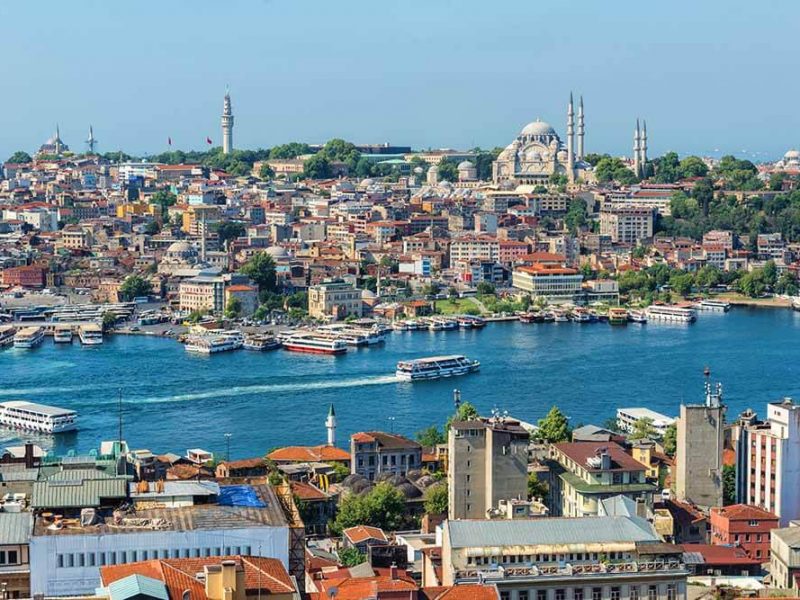One of the most fascinating and unique parts of Istanbul’s Historic Peninsula is undoubtedly the Golden Horn. Once polluted by industrial and domestic waste, it lost much of its charm for decades. However, with major cleanup efforts beginning in the mid-1990s, the Golden Horn has gradually reclaimed its former glory. Today, it ranks among the top destinations preferred by international visitors. Here, we list 14 essential facts and attractions about this remarkable inlet.
The Meaning Behind the Name “Haliç”
The Turkish name Haliç derives from the Arabic word khalij, which refers to a specific geographical formation. It generally describes the funnel-shaped widening of a river mouth under the influence of tidal currents. Observing the Golden Horn on a map of Istanbul makes it easier to understand this natural formation, which cuts deep into the city like a watery embrace.

Why “Golden Horn”? A Mythological Tale
The name Golden Horn comes from a Greek myth. According to legend, Hera, the jealous wife of Zeus, discovered her husband’s love affair with the beautiful Io. In her rage, she transformed Io into a horned cow and sent a fly to torment her. As Io fled, tossing her head side to side, she carved deep channels in the land; one of which became the Golden Horn. Eventually, Io gave birth to a daughter named Keroessa (from keros, meaning “horn”), whose name was later passed down to this area by her grandson, Byzas, founder of Byzantium. Westerners added the word “golden” to signify the region’s fertility and strategic value.

A Natural Harbor for Empires
Stretching inland from the Bosphorus, the Golden Horn formed a natural and protected harbor that served the ships of both the Byzantine and Ottoman Empires for centuries. According to historical rumors, ships that sought shelter here were sometimes charged in gold; adding another layer to the “Golden” epithet.
Legendary Bridges and Leonardo da Vinci’s Vision
Of all the bridges spanning the Golden Horn, the most iconic is the Galata Bridge, famous for connecting the historical peninsula to modern Istanbul. However, an unbuilt bridge is just as famous: in 1502, Leonardo da Vinci submitted a revolutionary design for a bridge to Sultan Bayezid II, which was never realized but remains a symbol of East-West artistic exchange.

The Sacred Site of Eyüpsultan Mosque
Located along the shores of the Golden Horn, Eyüpsultan Mosque is among the most spiritually significant places in Istanbul. A pilgrimage destination for centuries, it is a must-visit both for its religious importance and stunning setting.
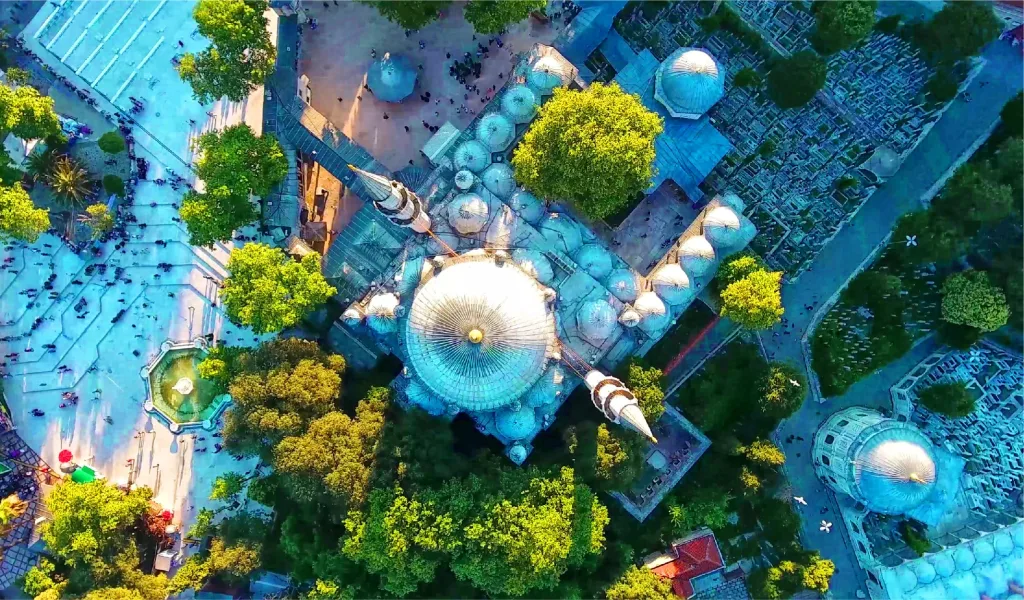
The Panoramic View from Pierre Loti Hill
The best place to enjoy a panoramic view of the Golden Horn is from Pierre Loti Hill, named after the French novelist who lived in Istanbul. The view from this hill, accessed via a charming cable car ride, offers one of the most romantic perspectives of the city.
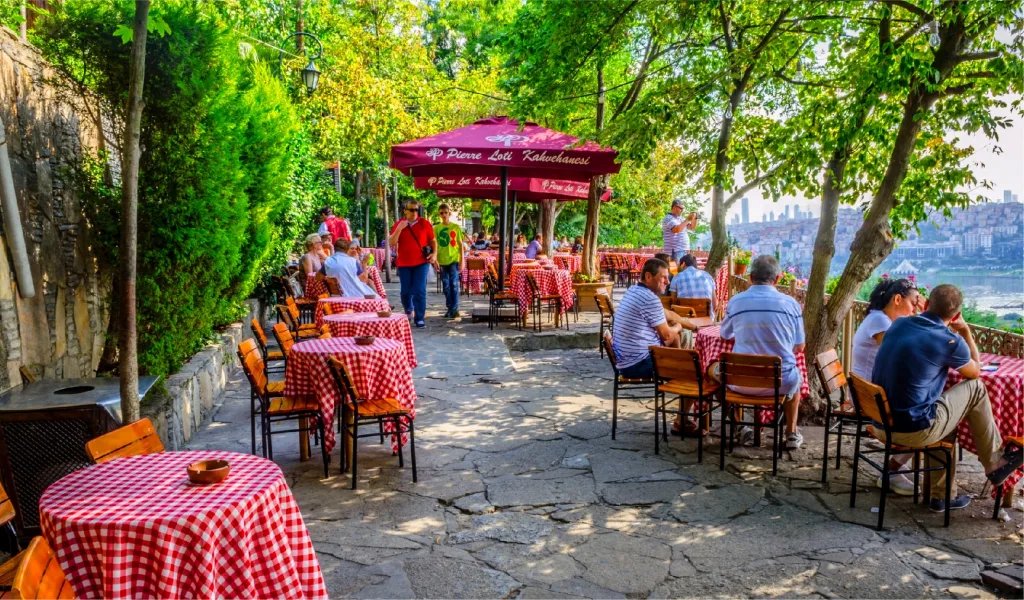
Balat and Fener: Historic Neighborhoods
The Golden Horn was historically home to minority communities during the Ottoman era. The neighborhoods of Balat and Fener, with their narrow winding streets, colorful homes, and ancient churches, offer a glimpse into Istanbul’s rich multicultural past.

Sütlüce and Miniatürk: Museums by the Shore
The Sütlüce area on the northern bank of the Golden Horn hosts several important museums, the most famous being Miniatürk; an open-air museum displaying miniature models of Turkey’s most iconic architectural landmarks. Open year-round, it’s ideal for families and history lovers alike.
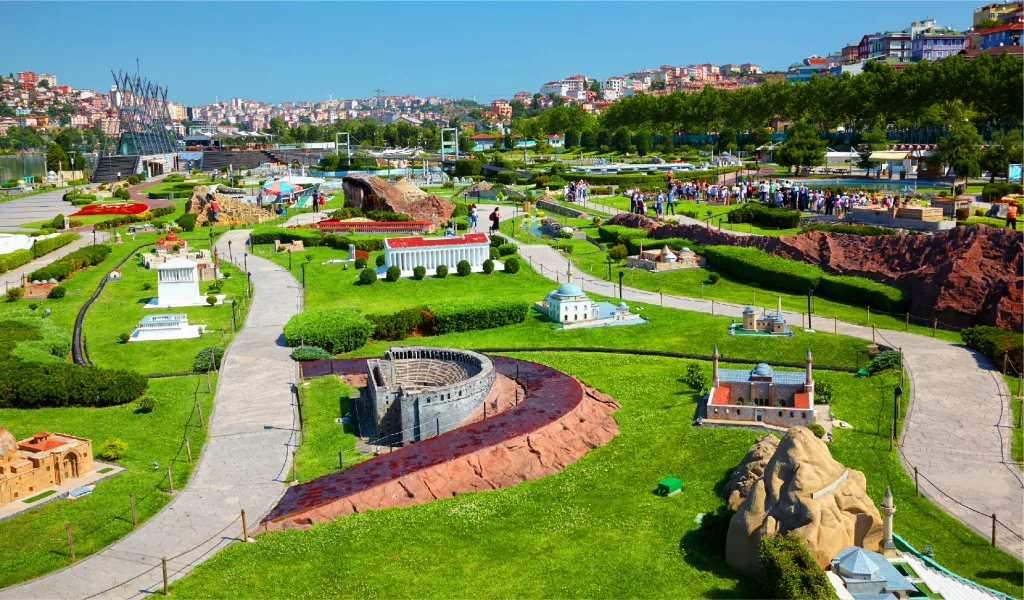
Ecological Revival and Biodiversity
Since the 1990s, extensive ecological rehabilitation has helped restore the Golden Horn’s water quality. Today, fish species have returned to the waters, and even dolphins are occasionally spotted. It stands as a successful case of urban environmental recovery.
A Hub for Arts and Culture: The Revived Haliç Shipyards
The Haliç Shipyards, once dormant, have been transformed into a dynamic cultural center. The opening of Müze Istanbul and various art galleries, event spaces, and exhibition venues have brought a new creative energy to the Golden Horn. It now serves as a bridge between Istanbul’s historical heritage and its modern artistic ambitions.
A Strategic Stronghold Through History
In addition to being a harbor, the Golden Horn played a key defensive role for the city. The Byzantines stretched a giant chain across its entrance to prevent enemy ships from entering. During the 1453 conquest of Constantinople, Sultan Mehmed the Conqueror famously bypassed this obstacle by having his ships hauled overland into the inlet; a turning point in world history.
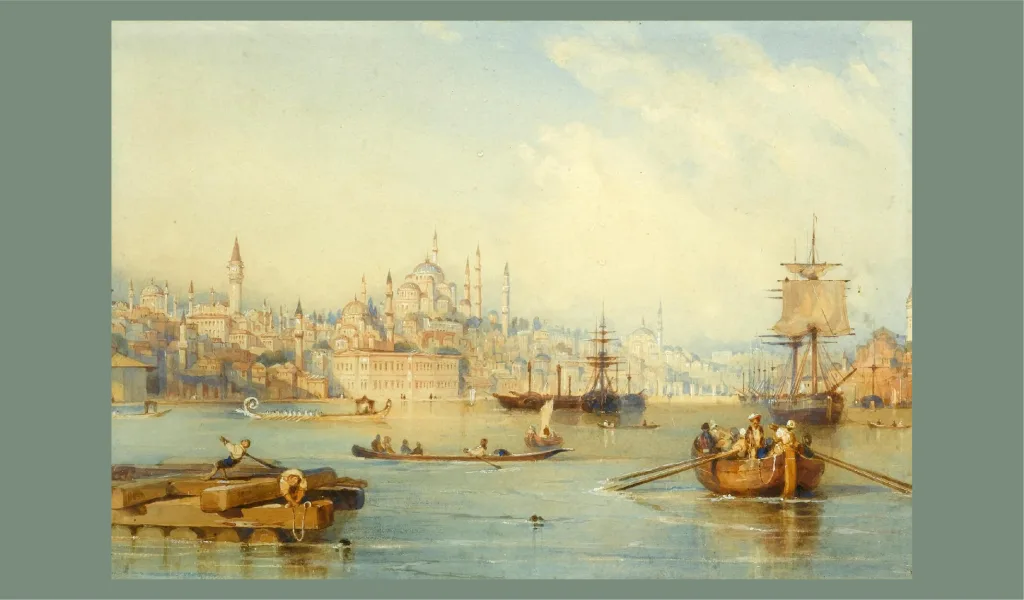
Explore the Horn by Boat: Public Ferries and Tours
Today, the Golden Horn can be explored by ferry. Istanbul’s Haliç Line offers scenic boat rides from Eyüpsultan to Üsküdar, offering a peaceful and photogenic way to witness the city’s historical layers from the water. You should visit Istanbul City Lines for the cruises along Golden Horn. Also, there are nostalgic ferries available in order to enhance the experience.
Universities and Museums Along the Horn
Modern Istanbul’s academic life also flourishes along the Golden Horn. Campuses such as Istanbul Bilgi University and Istanbul Ticaret University bring thousands of students to the area. Meanwhile, the Rahmi M. Koç Museum offers one of the most impressive collections of industrial and technological history in the region.
In Literature and Cinema
The Golden Horn has left deep impressions in Turkish literature and cinema. Writers such as Reşat Nuri Güntekin and Orhan Pamuk reference it in their works, capturing its nostalgia and mystery. Its waterfronts, piers, and narrow alleys have served as backdrops for countless classic films.

